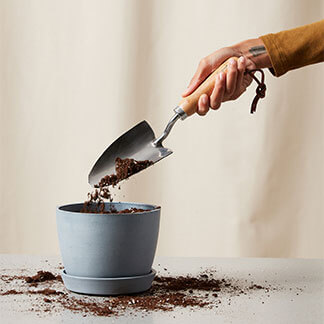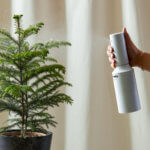Moisture
The most common cause of yellowing leaves among Monsteras is improper soil moisture–in particular, overwatering. Only water your Monstera when the top 2-3 inches of soil are dry. Soil should remain damp, but not wet. In the winter, you can allow your plant to dry out a little more between waterings.
When you water, make sure you provide enough water so that liquid flows from the drainage hole at the bottom of the pot and into the saucer. It’s extremely important to discard any excess water in the saucer, as your Monstera will not respond well to “wet feet,” which causes the roots to rot and the eventual death of the plant.
Providing proper and consistent soil moisture is important in caring for a Monstera. Alternating between bone dry and wet soil from ill-timed waterings can create stress and cause your Monstera to yellow.
Your humidity level
Low humidity and dry soil cause leaves to brown on their edges, later followed by entire yellowing. Misting the leaves of your Monstera often will increase the humidity.
Improper Light
Generally, Monsteras will thrive when placed in low to bright indirect sunlight. When exposed to direct sunlight for too long, the foliage will burn. While Monsteras can adapt to low light areas, their growth will slow. Too little light can result in yellowing leaves. Take note of the light your Monstera is receiving and move accordingly.
Pests
Weakened or stressed Monstera become more susceptible to insect infestations. Sap-sucking bugs like spider mites can drain your plant of moisture. This problem quickly manifests itself by yellowing leaflets and fronds. Scale, mealybugs, and spider mites occur frequently in indoor conditions. If not killed early on, these small pests proliferate and move all along frond parts into nooks and crannies. The piercing mouths of the insects exhaust your plant and accelerate yellowing, especially if your Monstera is already unhealthy from poor lighting, a nutrient deficiency or improper soil moisture.
Some yellowing is natural
Is your Monstera pushing out new growth? If there is new growth on your plant and the yellowing leaves are older, particularly at the bottom of the plant, this yellowing is natural. Your plant sheds its old leaves and sends energy to new growth.











